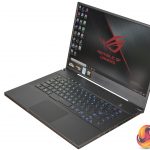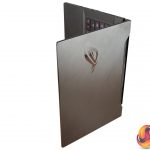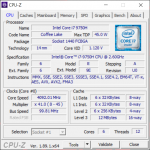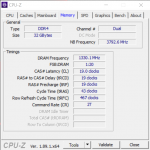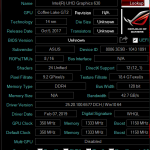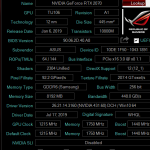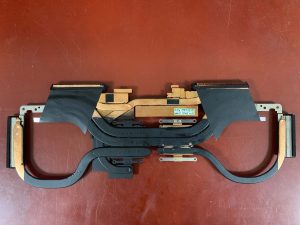
Despite the ROG Zephyrus's small lightweight form factor and sleek chassis ASUS has managed to pack the GX502GW full of high end components. Our review sample features the new Intel i7-9750H, RTX 2070 and 32GB of memory however with a price tag of £2500 it is targeting the demanding enthusiast user. Can it tick all the boxes?
Gallery:
Specifications:
- ROG Zephyrus GX502GW
- Windows 10
- Intel® Core™ i7-9750H
- NVIDIA® GeForce RTX™ 2070
- 8GB GDDR6 VRAM
- DDR4 2666MHz SDRAM
- Up to 32GB (16GB on board memory)
- M.2 NVMe PCIE 3.0 256GB/512GB/1TB SSD with RAID 0 support
- 15.6-inch Full HD (1920×1080) IPS-level panel, 144Hz or 240Hz, 3ms, 100% sRGB, Pantone® Validated, G-SYNC™
- Backlit chiclet keyboard, N-key rollover, RGB lighting, Aura Sync, Hotkeys (Volume down, volume up, mute, Armoury Crate)
- 2 speakers with Smart AMP technology
- Array Microphone
- 1 x USB 3.2 Gen2 Type C DisplayPort™ 1.4 and Power Delivery
- 1 x USB 3.2 Gen2 Type A
- 2 x USB 3.2 Gen1 Type A
- 1 x HDMI 2.0b
- 1 x 3.5mm Audio Jack
- 1 x Audio Jack Mic-in
- 1 x RJ45
- 1 x Kensington Lock
- 230W Power Adaptor
- Support Type-C PD 3.0 up to 65W
- Intel® 802.11ac (2×2) Gigabit Wi-Fi
- Bluetooth 5.0
- 360 (W) x 252 (D) x 18.9 (H) mm
- 2.0 kg
This laptop uses the new hexa-core i7-9750H processor and has a base clock of 2.6GHz but will turbo boost up to 4.5GHz under load on a single core. The i7-8750H it replaces was rated at 2.2GHz but with a turbo boost up to 4.1GHz under load. During testing I saw a maximum all core boost clock speed from the i7-9750H in the Zephyrus of around 4.2Ghz but the laptop could sustain a more modest 3.9/4Ghz while gaming. This all core boost speed is exactly the same as many of the laptops we tested with the slightly older i7-8750H.
The 32GB of memory in our sample is DDR4 and runs at a speed of 2666MHz. The GPU-Z screenshots show both the Intel integrated graphics and the dedicated Nvidia RTX 2070. The GTX 2070 features 8GB of GDDR5 memory and has a default clock of 1215MHz and a rated boost clock of 1440MHz. However, during testing we did notice the boost clock peaked at 1755MHz and held there most of the time.
We could not get the back off the laptop to expose the internals and we were unwilling to risk breaking our review sample – the raised hinge cooling system is a complex construction. We asked ASUS for some internal photos so we could showcase the cooling system and the two images above supplied by them detail the copper heatpipe configuration.
 KitGuru KitGuru.net – Tech News | Hardware News | Hardware Reviews | IOS | Mobile | Gaming | Graphics Cards
KitGuru KitGuru.net – Tech News | Hardware News | Hardware Reviews | IOS | Mobile | Gaming | Graphics Cards




